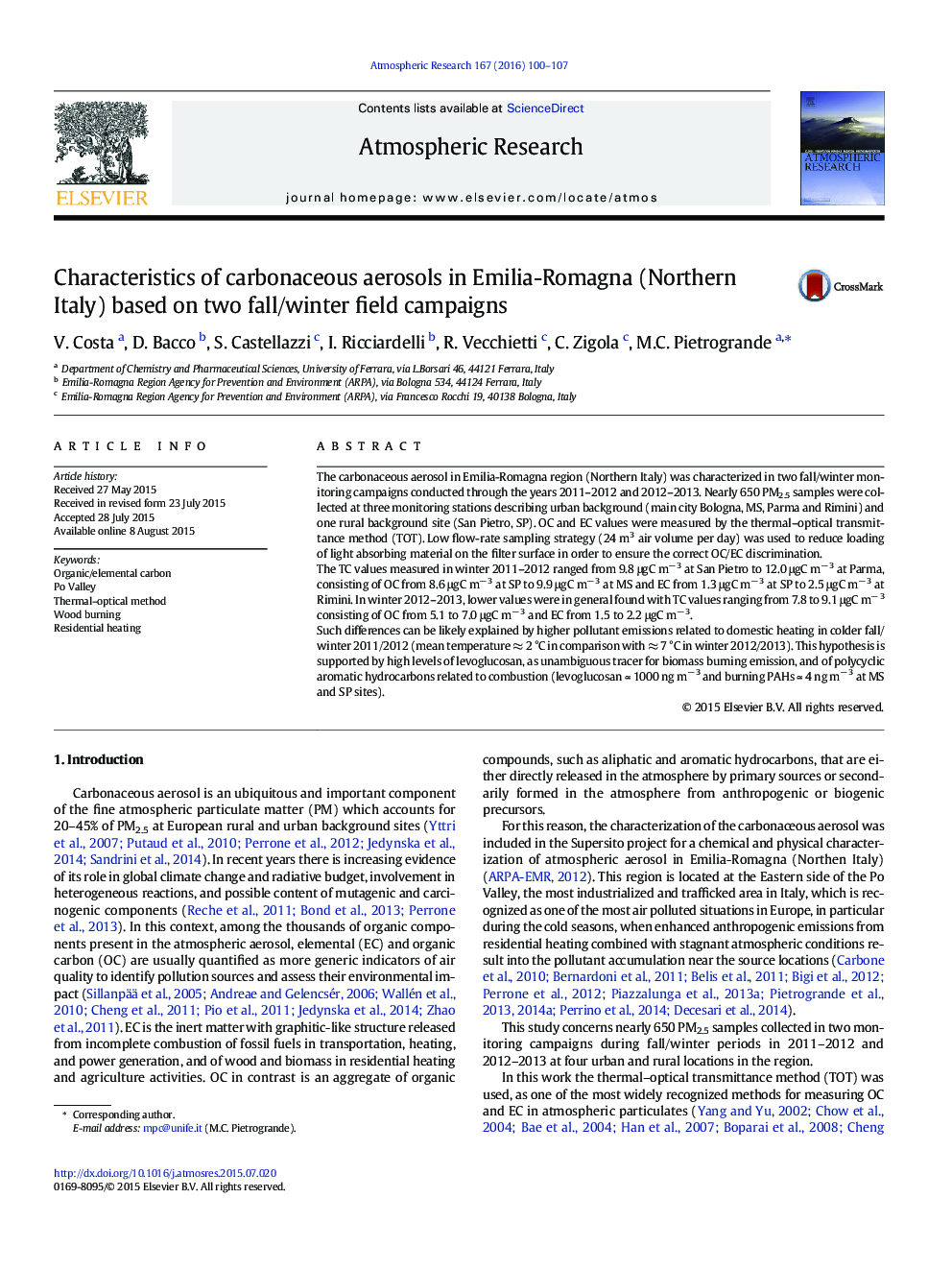| کد مقاله | کد نشریه | سال انتشار | مقاله انگلیسی | نسخه تمام متن |
|---|---|---|---|---|
| 6343143 | 1620509 | 2016 | 8 صفحه PDF | دانلود رایگان |
- OC/EC measurements at 4 sampling sites in Po Valley (Italy)
- Nearly 650 daily PM2.5 samples analyzed in 2 fall/winter campaigns
- Large contribution of emission from the wood burning for residential heathing
- Differences between two campaigns related to the meteorological conditions
- Homogeneous spatial distribution throughout the region
The carbonaceous aerosol in Emilia-Romagna region (Northern Italy) was characterized in two fall/winter monitoring campaigns conducted through the years 2011-2012 and 2012-2013. Nearly 650 PM2.5 samples were collected at three monitoring stations describing urban background (main city Bologna, MS, Parma and Rimini) and one rural background site (San Pietro, SP). OC and EC values were measured by the thermal-optical transmittance method (TOT). Low flow-rate sampling strategy (24 m3 air volume per day) was used to reduce loading of light absorbing material on the filter surface in order to ensure the correct OC/EC discrimination.The TC values measured in winter 2011-2012 ranged from 9.8 μgC mâ 3 at San Pietro to 12.0 μgC mâ 3 at Parma, consisting of OC from 8.6 μgC mâ 3 at SP to 9.9 μgC mâ 3 at MS and EC from 1.3 μgC mâ 3 at SP to 2.5 μgC mâ 3 at Rimini. In winter 2012-2013, lower values were in general found with TC values ranging from 7.8 to 9.1 μgC mâ 3 consisting of OC from 5.1 to 7.0 μgC mâ 3 and EC from 1.5 to 2.2 μgC mâ 3.Such differences can be likely explained by higher pollutant emissions related to domestic heating in colder fall/winter 2011/2012 (mean temperature â 2 °C in comparison with â 7 °C in winter 2012/2013). This hypothesis is supported by high levels of levoglucosan, as unambiguous tracer for biomass burning emission, and of polycyclic aromatic hydrocarbons related to combustion (levoglucosan â 1000 ng mâ 3 and burning PAHs â 4 ng mâ 3 at MS and SP sites).
Journal: Atmospheric Research - Volume 167, 1 January 2016, Pages 100-107
